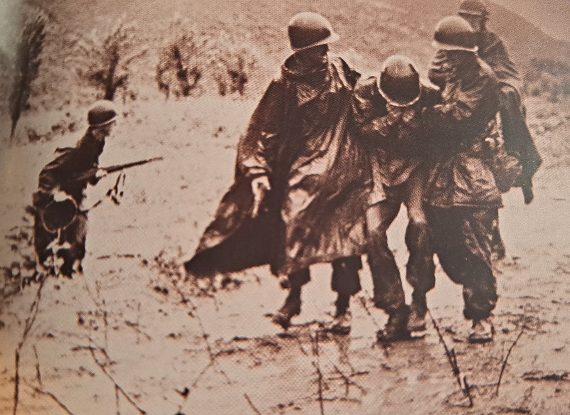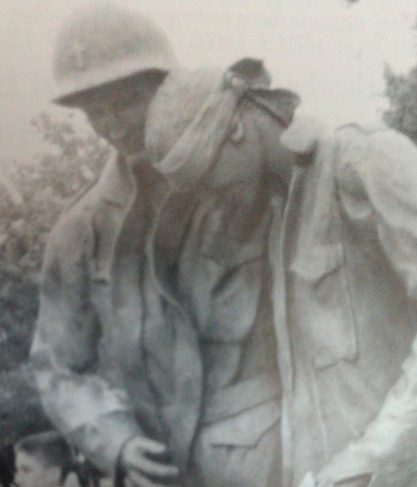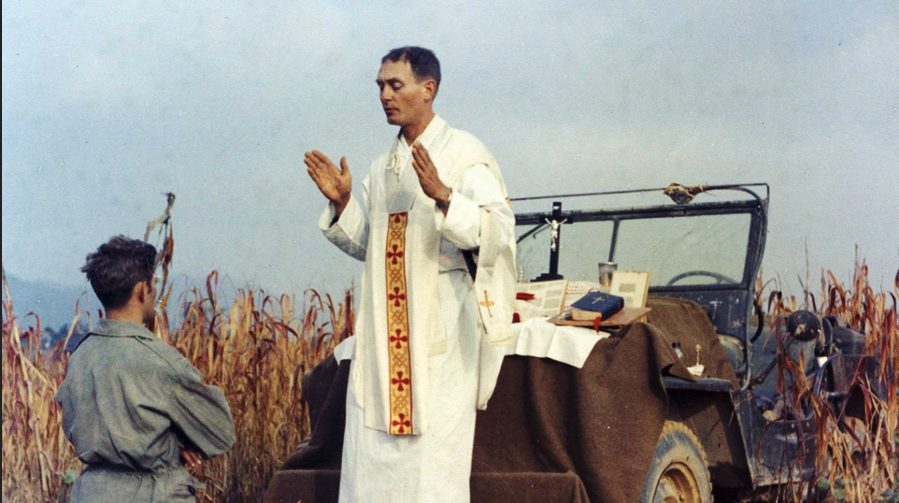
Over the course of my life as an “army brat,” a soldier and a retiree I have been well served by military chaplains representing a wide array of backgrounds, races, genders and creeds. Almost every one of them was able to provide meaningful pastoral care to the soldier or family member in need of spiritual direction regardless of that person’s faith, be it strong or non-existent. Those with whom I served were also astute observers and thoughtful advisors concerning the command climate, morale of the troops, and other sensitive issues.
Indeed, our chaplains do so much more! In Cold War Europe, for example, our chaplains served both congregations in our communities and our troops on maneuvers or in “density” at major training areas like Grafenwoehr. I remember well, and with BOTL-pride, listening to our own Chaplain Geoff Moran over AFN radio as he delivered the spiritual message of the day for all of USAREUR. https://thedaysforward.com/word-in-the-world/ In Vietnam, morale went up when a chaplain flew into the firebase or the jungle. Regardless of the day of the week, that day became Sunday! Later, we all prayed along with Chaplain Ray Dupere as he led us on a memorial tour, cemetery to cemetery across America, to solemnly acknowledge the ultimate sacrifice made by our classmates fifty years earlier. https://thedaysforward.com/semi-final-resting-place/ https://thedaysforward.com/semi-final-resting-place-2/
Several chaplains have become special members of my family; their witness encouraged my daughter Mary, USMA ’02, to follow those footsteps. She serves as a chaplain in the Colorado Army National Guard.
A Shephard in Combat Boots
Late in my career I had the good fortune to “meet” another very special chaplain. I was privileged to command the 24th ID and Fort Riley, Kansas in 2000-2001 at which time the post was a designated installation for commemorations of the 50th anniversary of the Korean Conflict. We proudly hosted and honored many veterans with parades, reunions, and the like. In the spring of 2001, the Archdiocese of Wichita contacted us to request support for the dedication of a statue of a deceased Korean War veteran, a Catholic priest named Emil Kapaun. When I asked who he was, I was handed a book entitled A Shepherd in Combat Boots.
Emil Kapaun was born 20 April 1916 and raised in the small farming community of Pilsen, Kansas inhabited mainly by Czech immigrants. He was ordained in 1940 and served in the diocese until becoming an army chaplain in 1944. He served in Burma during World War II and deployed with the 1st Cavalry Division to the Korean Conflict in 1950. His courage was legendary in the 1st Cav. Father Kapaun was always on the front lines conducting services, encouraging the weary and frightened, and sharing their experiences. He was the guy who dragged the wounded to safety during a firefight.
He was the guy who would drop into a soldier’s foxhole during a mortar attack to offer the startled fellow an apple and to check morale. For his extraordinary courage in near constant contact, he was awarded Distinguished Service Cross.
On 1 November 1950 as allied forces approached the Yalu River, Chinese Communist forces entered the battle. His battalion was surprised by their attack and was quickly overwhelmed at Unsan. He, of course, was with the wounded, refusing to leave them behind, and was captured on 2 November. Within minutes he saved a wounded soldier, Sergeant Herb Miller, from being executed. He then carried Miller for the first 10 miles of the long march to the POW camp. For the next seven months, he was the ultimate servant-leader, spiritually and in every other way, under the harshest conditions. He went far beyond the call of duty: he was the “good thief” who was able to deliver extra food; he washed their wounds; he performed myriad other life-sustaining efforts, prayed with them and conducted “forbidden” religious services. Against all odds, he bolstered their morale and gave them hope, buffeting the re-education classes and reminding them that they were valued American soldiers who could survive and return home. The Communists both hated and feared him. Their mistreatment of him eventually caused his death in May 1951. Even those who became prisoners after his death were inspired by what he had accomplished. One of these, Captain Gerald Fink, USMC, a man of Jewish faith, carved a nearly four-foot-tall crucifix with a barbed-wire crown to honor Kapaun whom he had never seen. Those who had known Kapaun in the POW camp were amazed at the resemblance of the Christ figure to the good padre. The crucifix was the “banner” under which the POWs paraded out of camp two years later; it remains an inspirational reminder in the entrance hall of Wichita’s Kapaun High School today!
Testimony of his courageous leadership by surviving POWs, especially 1LT Mike Dowe, USMA ’50, led to his eventual award of the Congressional Medal of Honor in 2009. Their testimony of his sacrificial gift of himself to his fellow POWs in imitation of Christ led Pope John Paul II in 1993 to declare him a Servant of God, the Catholic Church’s first formal step toward sainthood.
A Memorial for the Troops
I was moved and very inspired by his story. On 3 June 2001 I went to Pilsen with our mounted color guard, our chaplains, and an honor guard and participated in the touching dedication of the statute.
Upon return to Ft. Riley, I asked my staff if we could re-name the Custer Hill Chapel in the troop area after Chaplain Kapaun. They dutifully forwarded a request to the Pentagon. We promptly received a response: DISAPPROVED: cannot name a chapel after a person. In frustration, I asked, “What can we name?” “A street.” came the reply. “What street runs into the parking lot of the chapel?” I asked. When I learned that it was a one-block dead-end street, we re-named it Kapaun Street and our re-submitted request for the Kapaun Street Chapel was approved. In November 2001, fifty years after his death in the POW camp, the Kapaun family joined the Ft. Riley command for a ceremonial rededication of the chapel as the Chaplain (CPT) Emil Kapaun Chapel and across the parking lot, the newly named Kapaun Family Readiness Center. Soldiers and families would now enjoy facilities named for this soldier-chaplain-hero, a fitting conclusion to our 50th Anniversary of the Korean Conflict Commemoration events at Fort Riley.
A Moving Funeral for a Future Saint
Now…the rest of the story. Father Kapaun’s remains were returned to the US Army in 1953 but remained unidentified. He was interred in a grave marked “Unknown but to God” in the Punchbowl Military Cemetery in Hawaii. Finally, in early in 2021, due to advances in the science and technologies of DNA, his remains were positively identified. He would finally be returning to Kansas for a hero’s welcome and proper burial. Decades of prayers had been answered!
On 29 September 2021, 70 years after his death, the “world” saw on television what 6000 witnessed in person in Wichita, Kansas, the Mass of Christian Burial for Father Emil Kapaun. The solemn ceremony was celebrated by Archbishop of the Diocese of Wichita and concelebrated by five other bishops, assisted by myriad priests, deacons, speakers, cantors, and a mixed choir from parishes, local Catholic high schools and the military academies.
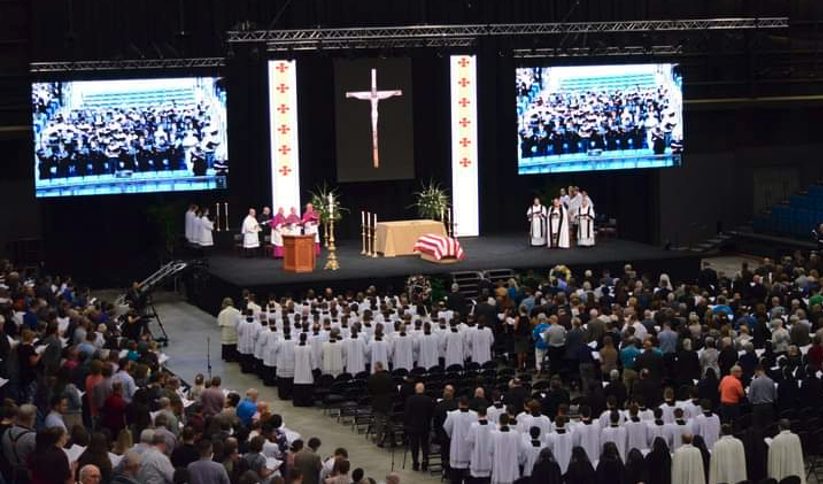
Soldiers, young and old, from near and far, including the command teams from Fort Riley and from the 1st Cavalry Division, attended to rejoice over his return, to honor and to celebrate his life of amazing and heroic service. After the Mass, Father Kapaun received full military honors and was entombed in a special vault in the Cathedral of the Immaculate Conception in Wichita. Several of his fellow POWs, including Sergeant Herb Miller, attended the funeral. My wife Joan and I along with classmate Joe McCarville and his wife Diane were also privileged to attend.
For his brothers in the clergy, his family and the people of Pilsen, the surviving POWs, today’s soldiers, kids from Father Kapaun and Bishop Carroll High Schools in Wichita, and the entire community, these events were ones of joy, hope, and inspiration.
Getting to Know this Man of Heroic Virtue
Father Kapaun’s extraordinary performance, clearly above and beyond the call of duty, exemplified the motto of the Chaplain Corps, Pro Deo et Patria, For God and Country. Since “meeting” him in 2001, Father Kapaun has become my spiritual inspiration, my go-to-hero, a patron saint of sorts: my model of what it means for a Christian to “pick up one’s cross and follow Christ!”
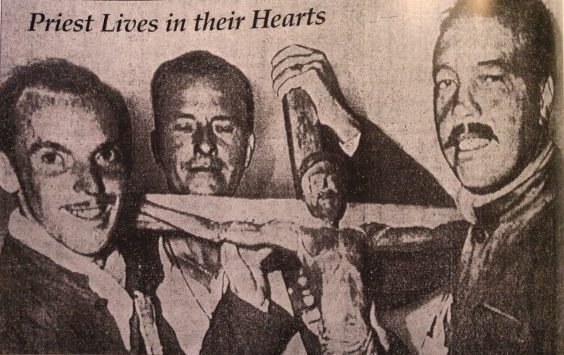
If you are interested in an authentic story about heroic virtue read A Shepherd in Combat Boots or The Miracle of Father Kapaun. Search YouTube for the many videos about Father Emil Kapaun. You will not be disappointed.
